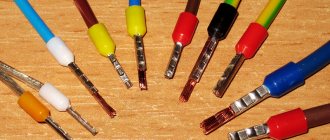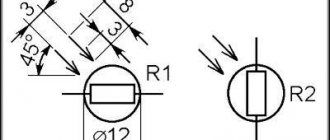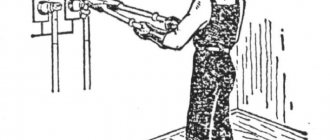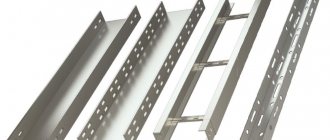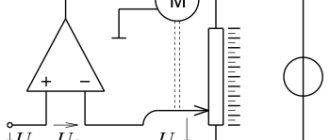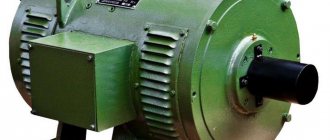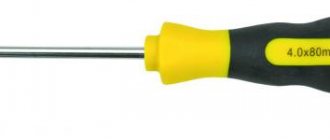When crimping conductors, one of the main conditions for obtaining high-quality contact and its reliable operation in the future is the use of a professional tool.
One of these tools is press pliers or crimpers, designed for crimping bushings, insulated, non-insulated lugs and automotive terminals. Crimpers for automotive terminals and insulated lugs must have matrices with a double-circuit crimping profile - along the core and along the insulation. Also, its geometry and shape must correspond to the crimp part of the tip.
As a rule, it is best to buy sets at once, which include the pliers themselves and all the necessary dies.
Among domestic manufacturers, the KVT company stands out and its two crimping kits:
- press pliers CTF
- press pliers CTB
Let's look at their configuration, differences and principles of operation. Both of these kits are designed for crimping both insulated and non-insulated ferrules.
Tool types
First of all, it should be noted that now there are many manufacturers of crimping pliers who manufacture them to different standards. The end result should be a tool that can have a narrow purpose (pressing only a certain type of wire) or a broader one (universal pliers for household structures and production). For this reason, the consumer should immediately have an idea of what type of core pressing tool he will need.
Pressing pliers provide high-quality and safe electrical and mechanical connections. Typically, the division into types of a given instrument is made based on them. Ferrule crimping pliers belong to the category of pressing equipment. They are often needed to work with low current systems to secure contacts.
So the tool itself can be divided into several types depending on its purpose. For removing the cable sheath and insulation. This type of pliers allows you to quickly and accurately cut off the required section of insulation on the wire without damaging the core itself. They can be adjusted to a specific diameter that should be removed from the core. The setting can be done manually or select automatic.
With manual tuning, there will still be a possibility of damaging the wire itself, but automatic tuning will allow you to remove the braid, which will have consequences for the cross-section of the cord. This type is often used when working with distribution and branch boxes. The cutting edge should always be sharp so that the cutting of the outer insulation is done in one action, without “chewing” the wire in the tool.
For press of final sleeves. For this type of mites, there are also several types, depending on the shape of their nests and shape. The nests may have plastic flanges or be made without them. They can be trapezoidal in shape or intended for square pressing. Those that have sockets with plastic flanges in their design allow you to effectively crimp the tips of a stranded wire, and their square shape can ensure reliable contact of all cores. With such pliers it is very convenient to do installation or centering for any type of section. For a more reliable and accurate contact press, the pliers must be selected according to the appropriate diameter (they are color-coded).
For insulated cable lugs. Work with insulated contacts should be carried out with an oval-shaped tool. Typically, their matrix should contain 3 standard forms for the press, which can be distinguished by colors - red, blue and yellow. Accordingly, for each of these colors, a tip, sleeves and other connectors with the same color indicator are produced.
When using such pliers when working with insulated wires, you must ensure that the position of the joint edge is correct. The joint edge is located in the middle of the upper profile of the pliers. This design is dictated by the fact that when placed on the side, the edge will be able to violate the reliability and tightness of the cable itself.
For pressing non-insulated cable lugs. Used for non-insulated wire types, as well as open wires made of brass. A special rod is made for the press in these pliers. Therefore, the sleeve itself is crimped in the center, and the rod must be placed on the dividing seam. Press pliers with open tips, which are made of brass, can have specific types of clamps. One is for wire and the other is for insulation. To make the press of open contacts reliable, it is worth attaching a locator to them. This device will allow for precise positioning. If it is necessary to crimp the terminals, it is better to use suitable pliers for pressing plugs.
Step-by-step mechanism of the crimping process
In theory it is not complex enough. The main thing is to have the right tool, suitable consumables and the ability to apply some muscular effort (if the crimper design is not automated). However, poor adherence to crimping technology can make the contact unstable, which will force the installer to repeat the entire procedure again. The sequence of the traditional procedure will consist of the following steps:
- Preparatory activities - at this stage you need to process the wire, remove the protective insulation from it using a cutting element, while leaving a margin of 3-5 millimeters. Separately, it is worth making sure that during stripping of the coating, the load-bearing core was not damaged. If damage is found, then such a section will have to be cut off completely.
- Preparing the connection - a sleeve/tip or connector is put on the wire, while the open part of the cable must be degreased or a special paste is applied to it (for SCS cables);
- Preparation of the tool - the required cross-section and tip size are set in the pliers matrix (the tip is inserted until it stops).
- Direct compression - pressure is applied to the working handles of the device or its hydraulics are started. When a characteristic click appears, the process is considered completed. The handles of the device return to their original position.
- The final step - if necessary, the remaining section of braid is returned to the joint and heated with a hair dryer (or other tool).
Types of crimping pliers
Structurally, crimping pliers are divided into two main types - operating on the principle of pliers or diaphragm ones.
The first of them are more common - they perform compression only on two sides, but unlike pasatages, they have specially shaped cutouts in the jaws that work as guides. This allows for high-quality fastening of lugs on the wire core, the base of which in cross-section is “U”-shaped.
The video shows different types of wire crimping tools:
The advantage of such devices that crimp wire cores is their relative versatility - you can “get close” to the lugs from any side. The main disadvantage lies in the need to have several of these pliers on hand, since the jaws usually have cutouts for 3-4 sizes of sleeves. As an option, you can purchase a universal crimper with replaceable dies, which are mounted on a special cassette. If it is necessary to work with other types of tips, the old ones are snapped into the cassette and suitable ones are selected in their place.
Diaphragm devices can compress sleeves from four or six sides, depending on the diaphragm mechanism. Due to their full coverage, a better and tighter crimp of the cable end is performed, and the device automatically adjusts to any sleeve thickness.
Before choosing such a tool, you need to take into account its main drawback - you can only crimp a sleeve into which the wires are inserted on one side - otherwise the pliers will remain on the wire, since their head is closed.
A somewhat separate category are crimpers that crimp computer cables of the “twisted pair” type and the like. The operating principle of such a tool is the same as double-jaw pliers, but instead of iron or copper bushings, their matrices are “sharpened” to work with plugs for computers or phones. What is done here is not crimping as such, but displacement of the contacts, which cut through the insulation of the wires and are pressed tightly against their cores.
CTV set from the manufacturer KVT
The STV set consists of a main tool and five number matrices. All elements are conveniently placed in a plastic case. The press jaws themselves are equipped with a mechanism that allows for quick removal and replacement of dies. It should be taken into account that new matrices must “get used to” the tool. When performing the very first operations, the tips may become snagged and deformed.
The presence of quick-release dies is a big plus for press pliers. However, the design does not have a sufficiently thought-out locking mechanism, which leads to its gradual weakening during operation. Only high-quality steel is used to make pliers. They have a ratcheting mechanism installed, which ensures complete and high-quality compression. The amount of pressing force can be adjusted using a special sprocket. The tool is unlocked using a lever located in its upper part.
If the matrix is incorrectly selected, the press pliers do not reach the end during the crimping process, and the handles are blocked in an intermediate position. Unlocking is done using the lever mentioned above. The elongated shape of the handles allows you to crimp large cross-section sleeves with both hands. This is very important for large volumes of work. The handles of the tool are moved apart at a slight angle, that is, you can easily grasp them with your hands, after which it becomes more convenient to work.
Types of sleeves
Before crimping the cores of wires and cables, it is necessary to select the correct sleeve. It is customary that in technical documentation many details have an abbreviation. Let's take a quick look at them. Sleeves for crimping wires are:
As you guessed, copper sleeves are used for crimping copper wires. Copper sleeves are divided into two types: GM and GML.
The abbreviation GM stands for “copper sleeve”. This is an ordinary copper sleeve, not coated or treated with anything (outwardly it resembles an ordinary piece of copper-colored tube).
The abbreviation GML stands for “tinned copper sleeve”. GML sleeves undergo tinning, their surface is covered with a special tin-bismuth layer. This layer protects the liner from corrosion and oxidation. We all know that copper tends to oxidize, and tinning prevents this. Thus, during crimping, the copper wires and the tinned sleeve do not react with each other (do not oxidize).
In my practice, I have met craftsmen who connected aluminum wires using GML sleeves. When asked why you do this, they answered “well, the sleeve is tinned.” In their opinion, due to the tin layer there is no direct contact of copper with aluminum. I still don’t recommend doing this, because when deformed, the top layer of the liner is damaged, and corrosion in this case is a matter of time. Then go and look for where the contact was lost, you can still inspect the twist somehow, but you will only have to bite off the sleeve.
Aluminum sleeves are designated in the documentation as GA “aluminum sleeve”; they must be used if aluminum wires are connected.
Combined sleeves, or aluminum-copper sleeves as they are also called, are designed for butt jointing of copper and aluminum wires. Combined sleeves have the abbreviation GAM and stand for “aluminum-copper sleeves”. It’s very convenient when, say, you need to extend the wires with the old wiring.
An aluminum wire is inserted into the sleeve on one side and a copper wire on the other. In a combined sleeve, the copper part is connected to the aluminum part using friction welding (do not try to repeat this at home).
Another type of GSI sleeves. the abbreviation stands for “insulated connecting sleeve”. GSI are a regular tinned sleeve coated with polyvinyl chloride (PVC) insulation. Using such sleeves, stranded copper wires are connected. When crimping wires, there is no need to remove the insulation; pliers are put on top of the insulation and a press is made.
How to work with crimping pliers - important nuances
The process of crimping wires is intuitive - a sleeve or tip is put on the wire(s), a pliers matrix is attached to it, the handles of the tool are closed and the contact is ready. In practice, most often the “first pancake”, or even several, turn out “lumpy”, and almost in the literal sense - the connections may be far from ideal. There have also been cases when contact in a seemingly well-crimped wire deteriorated over time.
If the shape of the terminals is not maintained
In the first case, the culprit is the settings for the compression force of the matrix parts, which can be different both for individual wires and for the tips themselves. Because of this, professionals prefer to have at least two tools so as not to have to reconfigure the spring to work with different wires or sleeves.
The quality of work is also influenced by the material from which the sleeves are made and their thickness. Crimping for dense terminals is always much easier and they subsequently hold their shape better than those made of soft materials.
The correct orientation of tips with a “U”-shaped cross-section is a requirement that lies on the surface, but is often ignored, and the misalignment of parts in any mechanism does not always fall within the zone of permissible error.
Twisting stranded cores before crimping
For every experienced electrician who started with twisting and soldering wires, this movement is most likely already a reflex, but when crimping for stranded lugs is performed, then you need to get rid of it. The validity of this statement can be verified by a simple experiment - take a pair of single-core single-wire wires, arrange them crosswise and squeeze them with pliers. In some cases, both wires are deformed, and sometimes only one, but in this case it will be almost completely broken and begin to dangle on a thin isthmus. Of course, the conductivity of this vein will decrease significantly.
If the wires do not twist, then when crimping the tip they will be located parallel to each other and when deformed they will simply fill all the voids without squeezing each other.
The nuances of lining wires in the video:
Color marking of sleeves and dies
Some manufacturers mark different sizes of sleeves with separate colors and the same marks are applied to the plier matrices.
We must remember that a unified system for this has not yet been developed, so if you purchase cartridges based only on color, you may end up with consumables that are not entirely suitable.
About types of tools
Now let's talk in more detail about what types of crimping tools there are. In total there are the following types of tools:
- press jaws;
- crimpers.
At the same time, crimpers are automatic and manual. Let's look at each of these tools in more detail.
Press jaws
So, let's look at the press jaws first. Their main purpose is to perform crimping of cable lugs and sleeves. They can be of different types and different sections. There are models of crimping pliers that are additionally equipped with an amplifier. This could be a lever or a hydraulic mechanism. Due to this additional element, the amount of force expended to perform high-quality crimping is significantly reduced.
All press tongs, as a rule, are equipped with quality control of the work performed, which allows the divergence of the handles to be adjusted until the work is completed
Of course, it is very important to use high quality tools for crimping. Pre-professional press pliers have a ratcheting mechanism that allows you to block the reverse motion until the end of the crimping cycle.
Due to this, under-pressing is completely eliminated, which may be the fault of the electrician himself.
It is worth noting that the level of crimping directly determines how strong the final mechanism will be and whether the electrical resistance of the contact connections will be of high quality.
Crimper
Now let's figure out what crimpers are. As mentioned above, they come in two types - automatic and manual. In general, a crimper is a tool that is used when performing electrical installation work. It is designed to connect wires to each other or to connector contacts during work. Using the tool allows you to completely eliminate the need for welding or soldering.
There are situations when the cable crimping process is performed quite rarely. In such cases, it is wiser to choose a tool that will combine nippers and several calibrated grooves. Moreover, some models of crimpers have special components that allow you to strip the cable.
If you need to purchase a tool for crimping one type of wire, then in this case it is worth choosing a model with the ability to adjust. With such a tool, the blades are automatically adjusted to the required diameter using a screw or cam, which is responsible for the adjustment. This makes the stripping process much easier and the user does not have to worry about which groove the wire fell into.
As for the differences between manual and automatic crimpers, automatic models are highly productive. With their help, you can easily strip the wire, install the tip and crimp it in different automatic or semi-automatic modes. The automatic crimper includes an electric press and a crimper applicator in its design. It is worth noting that applicators come in different types for different types of tips.
If we talk about manual crimpers, they are designed for a separate type of contacts or tips. In this case, everything is very clear, since the tool is launched under the influence of force applied by the user. Naturally, it does not have a high level of performance.
The best press jaws for 2022
What to look for when choosing? What mistakes should you avoid when choosing such a device? Pliers are a convenient, universal tool, thanks to the use of which you can quickly make high-strength connections from several conductors. However, when choosing such a tool (its variety), first of all, it is necessary to determine the tasks and features of the work that will be performed with its help.
For example, to clean contacts, cut small wires, or crimp connectors, it is recommended to buy products equipped with replaceable jaws. Hydraulic models are best suited for crimping tips made of different materials.
Which brand and what type is better to buy? When choosing such a tool, it is also recommended to pay attention to the manufacturer. The best manufacturers of press tongs, according to the majority of domestic buyers, are:
- Pro'sKit;
- Intertool;
- AcKo;
- I.E.K.;
- PROLINE;
- E-next;
- KWB;
- STOCK.
When choosing, it is also recommended to pay attention to the cost, design, and quality of the product itself. Inexpensive, budget models are perfect for simple work, for example for home use.
Where can I buy? You can purchase such a tool both in specialized stores and in online stores, having previously studied the catalog, technical characteristics, functionality and photos of the offered products and made an online order.
Short description
Long-term operation of electrical networks largely depends on how well all connections between conductors were made. That is why crimping products have become widespread, with the help of which the most reliable permanent connections can be achieved. During this procedure, the strands of the prepared wires are carefully compressed in special sleeves made of aluminum or copper. In order for the result to be of high quality, the master must apply great compression force, provided by crimping pliers.
Such a tool is often called a crimper, since many manufacturers equip the unit with replaceable matrices with profiles that match both the conductors and the insulation. On sale you can find quite large sets of such devices, where every master will find everything necessary for high-quality work.
Most often, modern professionals use a mechanically driven crimping tool. Such units are equally effective in both industrial and domestic industries. Of course, if necessary, you can purchase more powerful press jaws, where the main work is performed by a hydraulic drive. With their help, you can process cables with a large diameter and a cross-sectional area of 120 mm².
Universal press pliers for crimping sleeves and tips consist of two basic parts:
- The fixed element is a matrix, which is presented in the form of a curly brace, providing the necessary deformation of the material.
- The moving part is a specific punch, without which high-quality extrusion on the sleeve cannot occur.
In removable models of pliers, the correct choice of the working area, which necessarily includes the matrix, as well as the punch, is of great importance. If the master made any mistake, then the final connection will be extremely low, and normal contact will simply be unavailable. In addition, the compression force also needs to be measured. After all, excessive pressure will rupture the sleeve, which will make it unsuitable for further use. But a weak crimp, on the contrary, will not be able to provide high-quality contact; the final contact will be extremely unreliable.
It is worth noting that recently craftsmen have been actively using manual press pliers of the PK-16 brand, which are manufactured by the KVT company. The thing is that such devices have the simplest design, a high degree of endurance, and they are also very convenient to use. The tool is completely free of unnecessary auxiliary functions, due to which it is included in the list of the most popular budget options.
Features of crimping the ends of Internet wires (connectors)
Proper operation on any cable network will depend on several factors. First of all, this includes the quality of the wire itself. In second place is the degree of professionalism of network installers. In last place we can put the quality of connections in communications (however, such a gradation is clearly unfounded, according to many professionals).
It is contact, in most cases, that causes the transmission of an unstable or weak signal. To produce the most reliable connection, all system cables must be properly crimped using crimpers that can accommodate special connectors.
Any connection of Internet cables begins with removing the insulating coating. You can use a separate tool called a “stripper” for these purposes, or use a crimper with a built-in blade function. Thus, with the help of a cutting element, the insulation is stripped. Next you need to install the connector. In the modern world, most often, RJ45 connectors (Register Jack is a special network interface) are used for installing SCS (structured cabling systems). The body of this connector is slightly larger and in terms of connection performance is superior to the outdated RJ11. The latter cannot be used for computer networks and is only suitable for telephone communications. The crimping process itself is carried out according to a standard scheme: a connector is clamped into the working jaws of the device with the end of the stripped wire threaded into it, after which, with the application of mechanical/automatic force, crimping occurs.
Application
The principle of operation of a tool such as a press pliers can be understood while performing work using them. To do this, you will need a certain type of wire, the crimping device itself, and a connection element for the wires, which is placed at the ends of the contacts. The first step will be to remove the external insulating protection, which is done using pliers. The tool has a semicircular groove into which the wire is placed, then the upper cutting edge is pressed. After several turns around the cable axis, the insulating coating will be cut off and can be easily removed. In order to get the correct press with high-quality contact, it is enough to clean about 4 centimeters of the wire.
The next step will be the alignment and placement in the desired sequence of all available cores, based on the requirements of the connectors. After distributing the wires, you should squeeze them tightly together and cut off the edge, leaving 1.5 cm for connecting the contacts, then all the contacts, with complete preservation of the sequence, are placed in the connecting device. The depth of the core insertion should be at such a distance that the lower recess of the connector can reach the wiring insulation. To avoid damaging it when crimping, this condition must be met, since the notch is pressed tightly in to secure the device to the cord.
And the third stage is to place the device in the seat of the pliers, making sure that the colors of all the cores match and that they are placed correctly, after which pressing can be done. This stage requires care and checking the strength of the connection, as well as the integrity of the connector itself.
For stripping cables
The presence of such a tool will speed up the work process and improve the quality of the master’s work. Removal of insulation from the cable will be done quickly, accurately and without damaging the core itself. The pliers are adjusted to the required cable size (diameter) that needs to be cut from the wire. Configuration can be done manually or automatically. Manual adjustment is not as good and may damage the wire, but automatic adjustment will allow you to remove the insulation without harming the cross-section of the cord. This type is most often used to work with distribution and branch boxes. In order for the cut to be high-quality and neat, the cutting part must always be sharp, so that the cutting is done in one movement, without repeated actions.
For end sleeve press
The press can be considered one of the most reliable and permanent connections. The essence of this process is to compress the wiring strands in a special sleeve, which in turn can be aluminum or copper. To minimize the magnitude of the transition resistance at the junction, a sufficiently large compression force is required, and the sleeve and the conductor must be in maximum contact. End sleeve pressing pliers can be trapezoidal or designed for a square press. Tools with plastic flange connectors affect the efficient crimping of multi-core cables, and their square shape helps ensure reliable contact of all cores. With this tool, installation or centering for any type of section is much easier. For precision and reliability of the contact press, you need to correctly select the appropriate diameter of the pliers.
For crimping insulated cable lugs
When working with insulated contacts, you need to use an oval-shaped device. Typically, the matrix of such a device should use three standard press molds, differing in color - blue, yellow and red. In accordance with these colors, tips, sleeves and other various connectors are produced with the same color indicators.
For crimping bare cable lugs
The pliers for crimping non-insulated cable lugs are made of brass and are equipped with a special rod in their design, with the help of which the sleeve is crimped in the center, and the rod is seated on the dividing seam. Such a tool may have two types of clamps, one for wiring and the other for insulation. To ensure the reliability of the press of open contacts, a locator is attached to the contacts, which will allow achieving accurate positioning.
Color coding of tips
Color marking is used for NShVI tips. The color of the connector skirt corresponds to a specific wire cross-section:
- black – 1.5 mm2;
- blue – 2.5 mm2;
- gray – 4 mm2;
- yellow – 6 mm2;
- red – 10 mm2.
Color marking table for NShVI tips
Crimping wires using pliers cannot compare with hand twisting or soldering in terms of quality and speed of connections. For any connections you can always choose the right crimper model.
Types of lugs for crimping
For every average person, a striking example of incorrect connection of wires is the staircase switchboard; many apartment owners have melted wires in the panel and have twists. Crimping lugs for wires can save citizens from the possibility of heating and fire of electrical wiring as a result of poor-quality contact of wires or lack of cable lugs.
When there is good contact between the connected cable or wire and the connecting device, the transition resistance is minimized, and with an increase in the current load on the contact group, they can heat up in the event of poor contact. Sleeves and tips are intended to remove or minimize contact resistance, in other words, to eliminate poor-quality contact under a bolt or screw.
To carry out crimping (crimping for lugs) of wires and cables, special products are used - lugs and sleeves. Tips can be for stranded wires or single-core wires; they are divided according to their purpose and the type of wire for which they are used (copper or aluminum).
For crimping copper cable cores, lugs are used, made from a seamless copper tube, which is flattened on one side and has a hole for a screw connection. This type of tips is:
- with different diameters for the wire and mounting hole, without a protective coating;
- for crimping, electrolytic tinned with different holes for fastenings.
The markings for this type of tips are as follows:
- without coating, TM – X – Y, where X is the wire cross-section, Y is the size of the mounting hole;
- coated, TML – X – U.
There is also a type of lugs with an inspection window; these are tinned copper products for terminating cable cores and wires. A special feature of this type is the ability of the termination performer to control the correctness of crimping through the control window. This type of product is marked as TML(o); it is noteworthy that they can be installed on the ends of cables using solder and soldering, which almost completely removes the value of the transition resistance.
Quite often in electrical engineering there is a connection between an aluminum wire and a copper cable; in this case, it is recommended to use aluminum-copper lugs for a high-quality connection of the aluminum wire and the copper busbar of the panel.
With the reduction in overall dimensions of instruments and devices, pin products have become popular tips for terminations. They are used in electrical equipment and circuit breakers in protection devices. With the reduction of clamping fastenings, the pin is the most optimal solution for good contact. This species is labeled as NSP.
NShVI tips
Cable lugs for crimping NSHVI are a pin-sleeved product with insulation. Electrolytic copper is the material from which it is made; insulation is installed on the back side, which is thicker than the metal part. When the terminated wire with this tip is inserted into the socket, only the insulated part of it remains under the clamp on the outside. In industry and in everyday life, this type of lugs is used for cables with a cross-section of up to 35 sq. mm; they are crimped with a special tool.
There are several modifications of this tip, which differ in the number of connected wires in one tip. For two cables, the marking looks like NSHVI2, there are no structural differences in this tip, the same metal part and PVC cuff, but the diameter of the sleeve (skirt) is larger, designed for two wires.
Features of working with NSHVI
Cable lugs of this type are intended only for multi-core cables; they cannot be used in the termination of wires with a single core. For rigid (single-core) wires, crimping with bushings (sleeves) without insulation is used. Crimping of a stranded wire is carried out as follows:
- the cross-section of the wire is selected, the brand of the tip is selected, into which the conductors must fit freely and tightly from the side of the skirt;
- in practice, the type of tip is selected with some margin. Example: a PV-3 wire with a cross-section of 1.25 sq. mm can be terminated with a tip of 1.5 sq. mm. The section of the skirt is up to 2.5 sq. mm.
Video
The entire “KVT” tool for crimping power lugs and sleeves can be divided into 3 main groups according to the principle of operation:
- Mechanics,
- hydraulics,
- battery tool.
Depending on the shape of the crimping profile, wedge-shaped and hexagonal crimping are also distinguished.
The principle of wedge-shaped crimping (indentation) is most often implemented in mechanical press jaws. In addition to hand tools for crimping lugs on small-section wires (from 1.5 mm 2 to 10 mm 2 or maximum 35 mm 2 ), wedge-shaped crimping is in demand when installing cables and wires with seamless monocores. Wedge crimping is considered a reliable alternative to soldering, but, like soldering, it is gradually falling out of use. However, this method has its advantage - most often such presses are equipped with a built-in punch and one matrix, so that when using them, constant changes of dies are not required and they can crimp tips of any standard, not exceeding the capabilities of the tool.
Hexagonal (hexagonal) crimping is by far the most popular and popular technique for installing cable sleeves and lugs. Hexagonal crimping has a number of advantages:
- The hexagonal profile of the matrices ensures uniform compression of the lug shank onto the cable core along the entire perimeter. Due to this, the maximum contact connection area and a high degree of sealing are achieved.
- Due to the uniform compression of the walls of the tip shank, the likelihood of the formation of microcracks and defective fractures of the tip material is reduced.
- There is no possibility of pinching and damage to the current-carrying core of the cable. Gentle crimping and integrity of the cable core are of particular importance when crimping stranded cores of 2-6 flexibility classes
- With the correct selection of matrices, the hexagonal crimping method provides a much stronger mechanical connection between the tip and the conductor, and also guarantees reliable electrical contact.
According to the operating principle of the KVT press, they are divided into:
In terms of productivity, mechanical presses are inferior to hydraulic and battery-powered tools. However, mechanical tools have their advantages:
- They are not sensitive to the temperature at which installation takes place, have a reliable design and do not require special maintenance.
- When working with tips of small sections (from 1.5 to 10 mm 2 ), it is more convenient and faster to work with a hand-held, compact mechanical tool. However, we should not forget that crimping with mechanical presses occurs solely due to the physical strength of the operator, which makes them uncompetitive when carrying out a large volume of work that requires a significant number of crimps.
- Lack of replaceable dies and removable parts.
The popularity of hydraulic tools is due to the high pressing force from 5 to 100 tons, relatively low price and high operational reliability. Hydraulic tools "KVT" can be divided into 4 main groups:
– manual hydraulic presses of the PGR models of the “Master” series without an ASD valve,
– manual hydraulic presses of the “Profi” series PGRs models with an ASD valve,
– manual hydraulic presses of the PGRs models of the “Profi” series with an ASD valve and
automatic return of the rod,
– pump hydraulic heads of PG models with a remote pump.
Advantages of KVT hydraulic presses:
- All KVT hydraulic manual presses, except the 70th series, are equipped with a two-stage mechanism for accelerated pressure build-up, which reduces the number of “idle strokes” before closing the dies and significantly saves installation time.
- Presses of the professional PGRs series are equipped with an ASD (automatic pressure release) valve - when the maximum operating pressure is reached, the valve is activated, preventing further pressure from being pumped into the working cavity of the tool. This solution significantly increases the working life of the tool and protects it from possible breakdowns.
- In accordance with ergonomic requirements, a number of models or elements of KVT hydraulic presses are made of high-strength aluminum alloy, which significantly reduces their weight.
- The widest range of crimping: copper and aluminum tips with a cross-section from 4 to 1000 mm 2
- For models of the 300th series of KVT presses, the assortment includes sets of precision dies for crimping tips and sleeves of the most popular standards in Russia (GOST, KVT standard, DIN, etc.)
- All hydraulic presses have a rotating head, which makes work easier and increases productivity
crimping tool The only thing that limits its widespread use today is the relatively high price due to the cost of the motor with an electronic control board and batteries.
At the same time, the cordless tool has almost all the advantages of classical hydraulics, which is not surprising, since it uses the same principle of pressurization, plus it has its own “tricks”:
- High speed.
- Complete absence of physical effort during operation - just press a button.
- All models of KVT battery presses are equipped with an ASD system and an advanced automatic rod return mechanism, which guarantees a full crimping cycle and tool integrity.
A tool that united professions and centuries
What can unite the work of a dentist or a jeweler and a blacksmith or, say, a sleeper? Of course, these are their working tools. Of course, they differ in their appearance and size, and they will be made of different materials, but nevertheless, most of them will belong to the same tool group - articulated pliers. The name is double, the meaning is the same, and the weapon itself consists of two, in most cases, identical halves.
These “twin” parts are connected using a hinge, hence the first part of the name. In these halves, in turn, a distinction is made between the working part and the handle, the relationship of which to each other can be different, depending on the scope of application and the tasks facing them. Their working parts, regardless of size, are usually called sponges - for this they owe some similarity to living beings: they also close and open. This is how the second part of the name appeared.
It is interesting that, having passed through the centuries of their existence, these instruments have not changed their essence, have not lost a single area of application, quite the opposite: the development of scientific and technical thought has led to the emergence of more and more new tasks for them. Perhaps the only thing that has changed is the appearance has become more presentable. And some areas of use, for example, medicine or complex electrical installations, require special manufacturing. And so, neither give nor take, pliers are a tool that has united different professions and entire centuries.
Types and equipment
According to their design, crimping pliers can be divided into two main types - operating on the principle of pliers or diaphragm ones. The first of which are more popular and work on the principle of squeezing only from two sides, but in comparison with pliers they have special cutouts in the “jaws”, which are guides, which allows for high-quality fastening of lugs on the cable core, the base of which has a “P” cross-section. -shape. The main disadvantage of such a tool is that you need to have several of these devices with you; up to 3-4 sizes of sleeves can be placed on the “jaws”. For convenience, you can purchase a universal crimping model with replaceable dies.
Diaphragm tools are capable of crimping a sleeve from 4 or 6 sides, which directly depends on the diaphragm mechanism. Due to this girth, they make a better and tighter crimp of the cable end, and the device also adapts to any sleeve thickness.
There is also a category of pliers that are used for crimping twisted pair computer cables. The operating principle of this device is the same as in double-jaw pliers, but instead of metal bushings, their matrices are “sharpened” to work with plugs for computer equipment.
Device and purpose
The shape resembles ordinary pliers, but functionally they do not bite parts, but clamp (press in). This is where the name came from. The device has a crimping head made of durable steel and comfortable long handles. The head is usually equipped with a set of crimping attachments of several sizes.
When using which fittings are press pliers required?
The device is required when crimping press fittings. The fittings are firmly pressed with press pliers at the end of the blanks (in this case, the upper coupling of the fitting is deformed and pressed into the thickness of the plastic) and form a reliable sealed connection.
